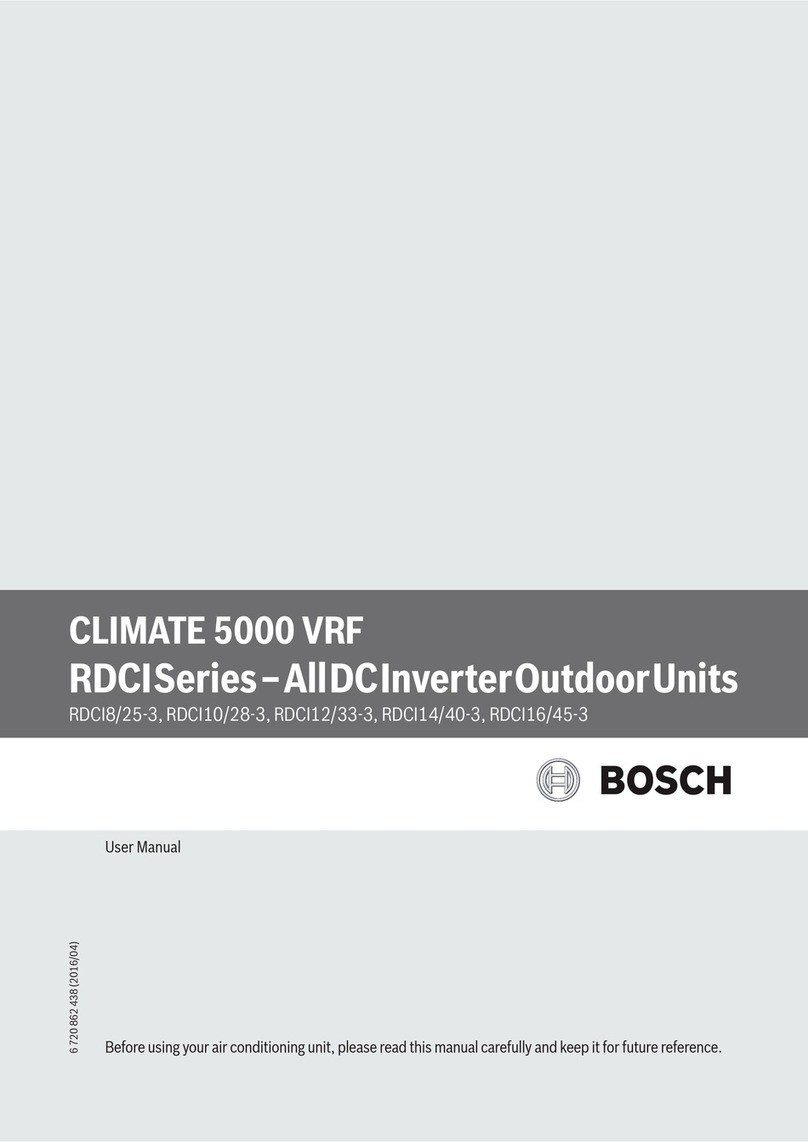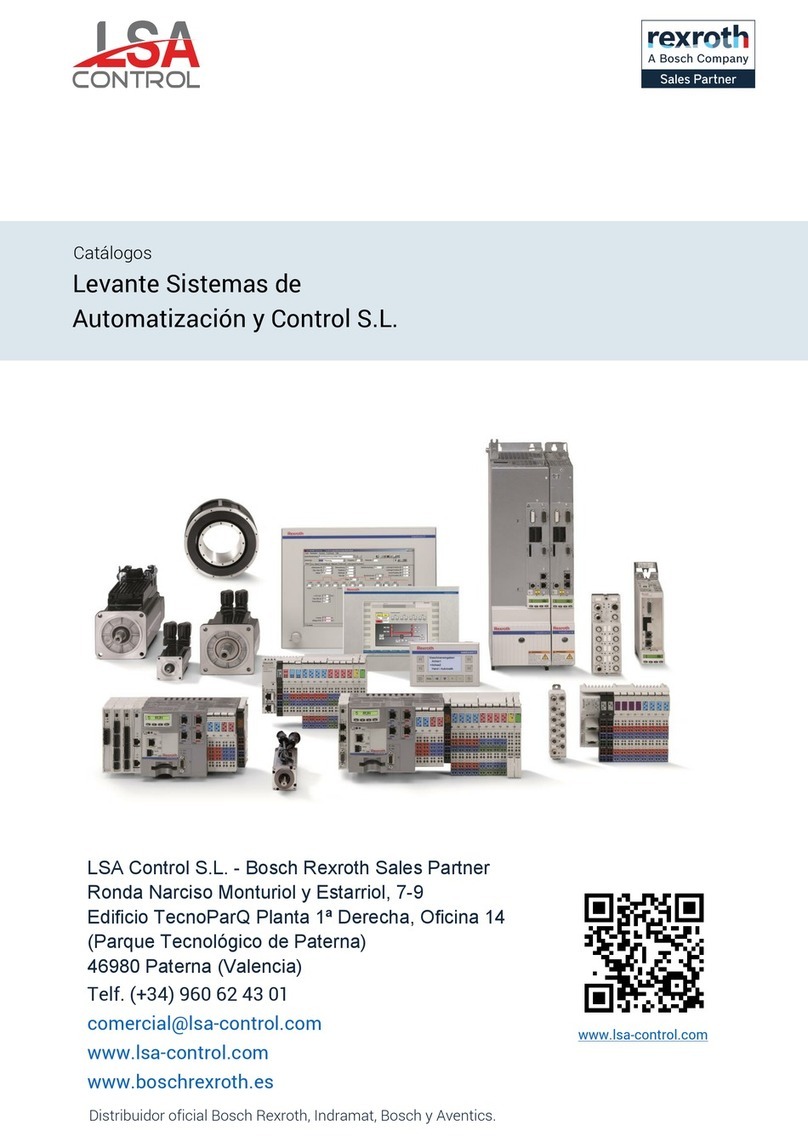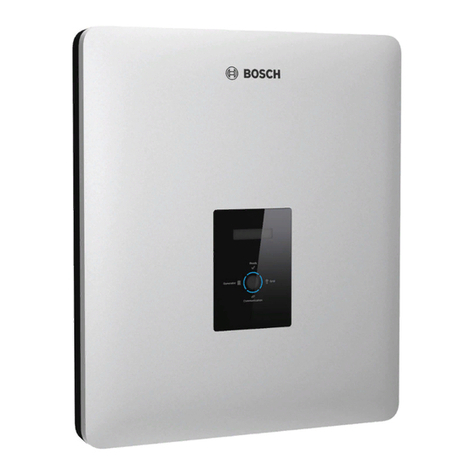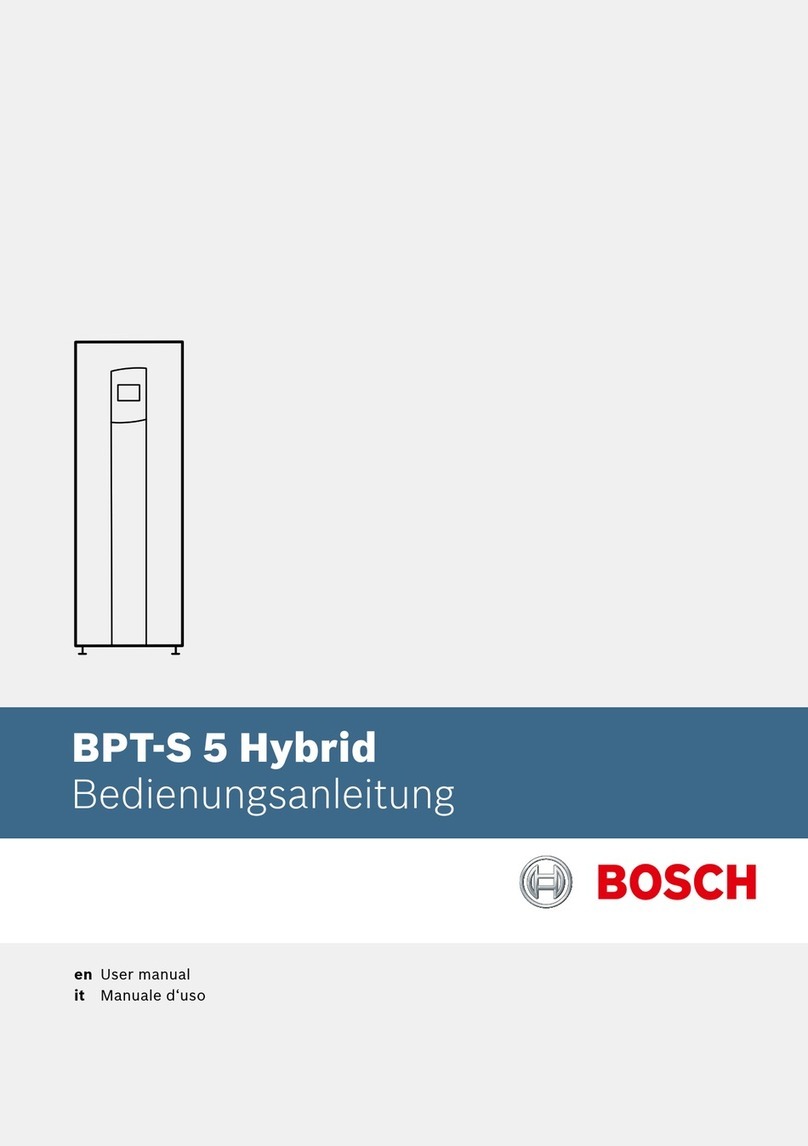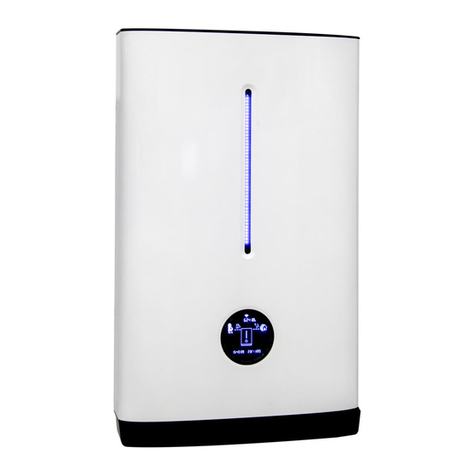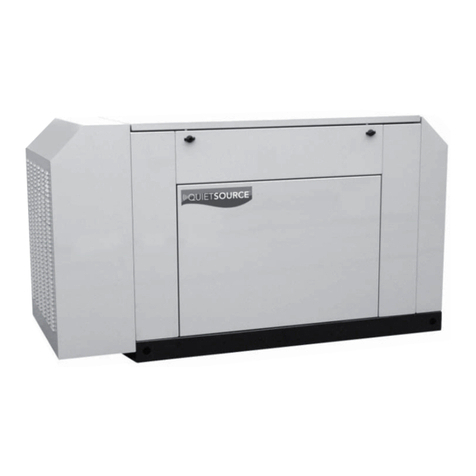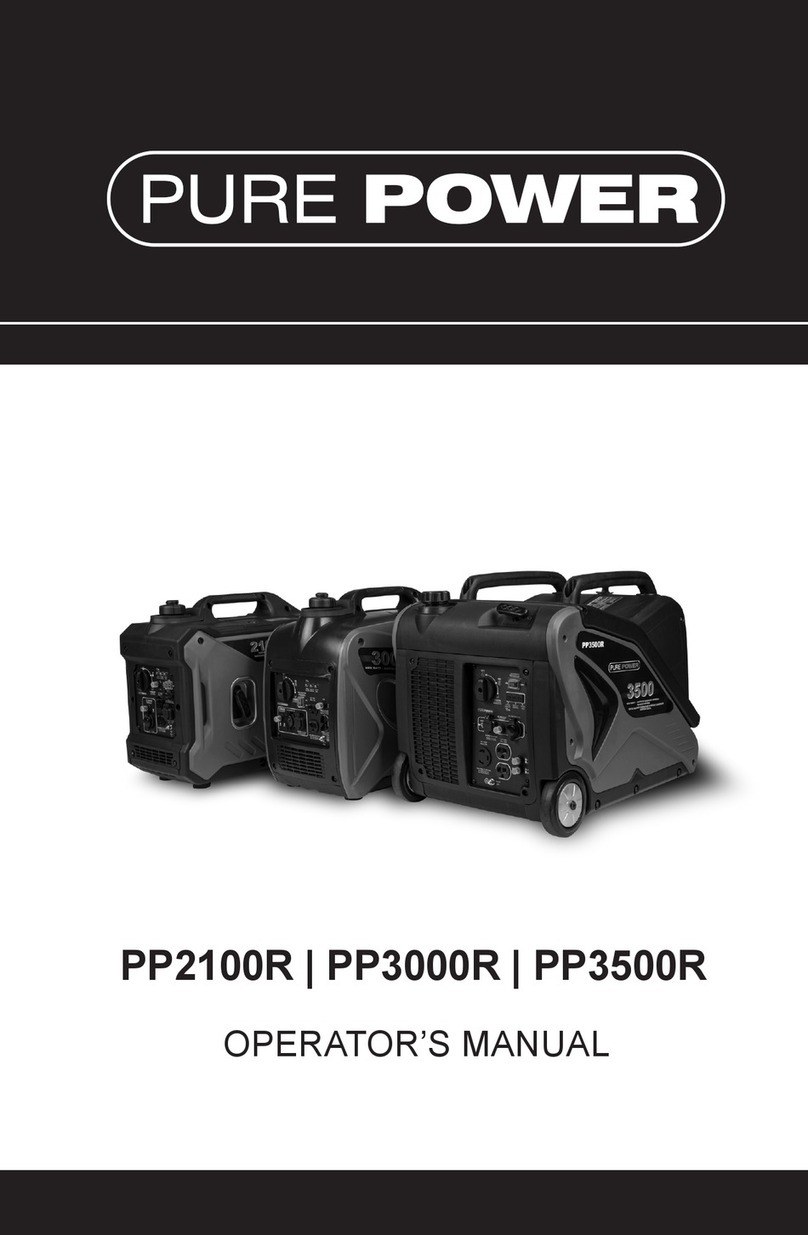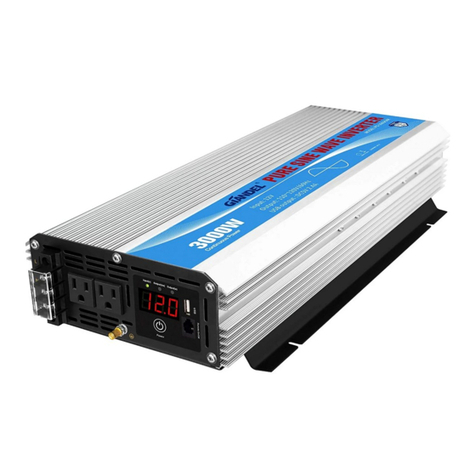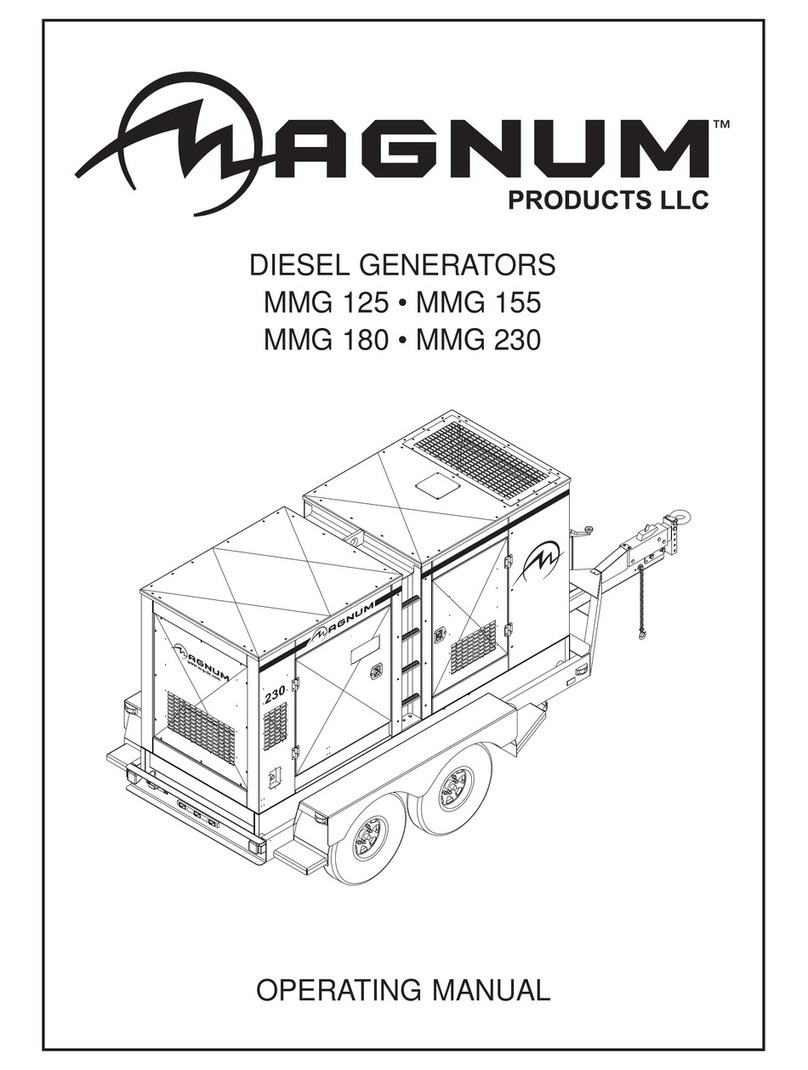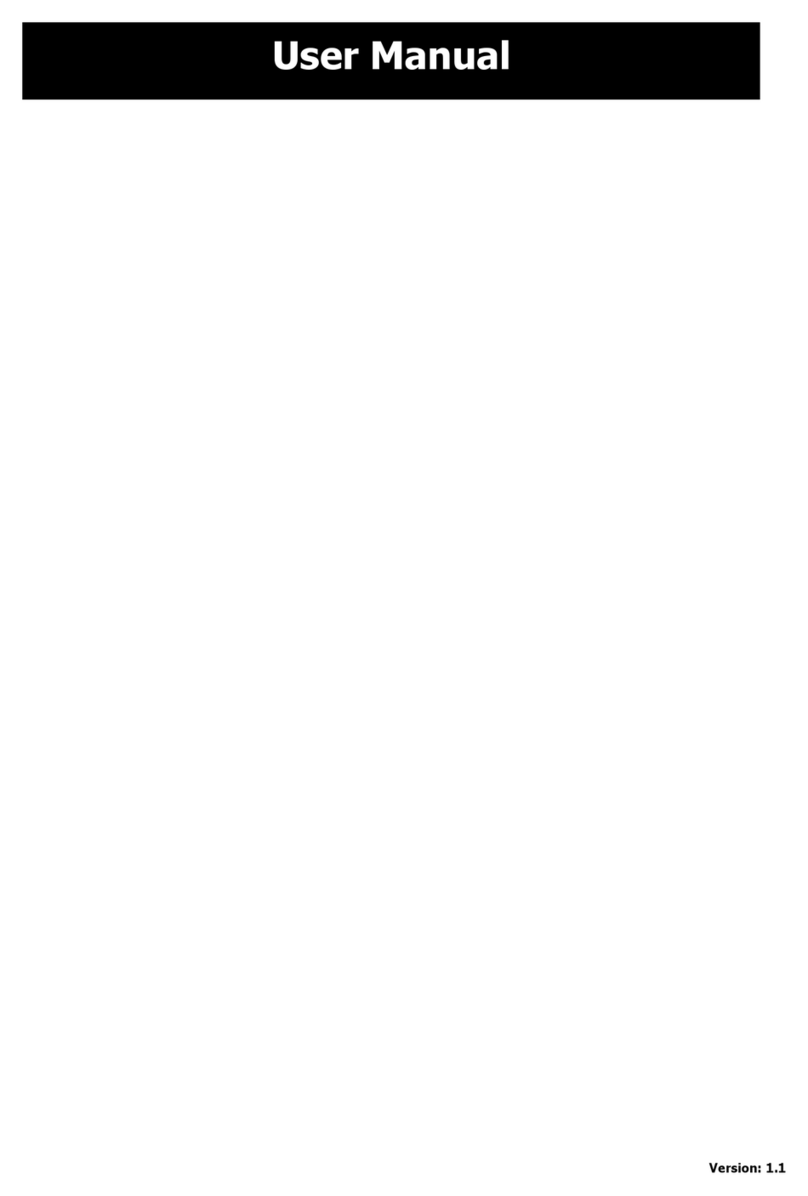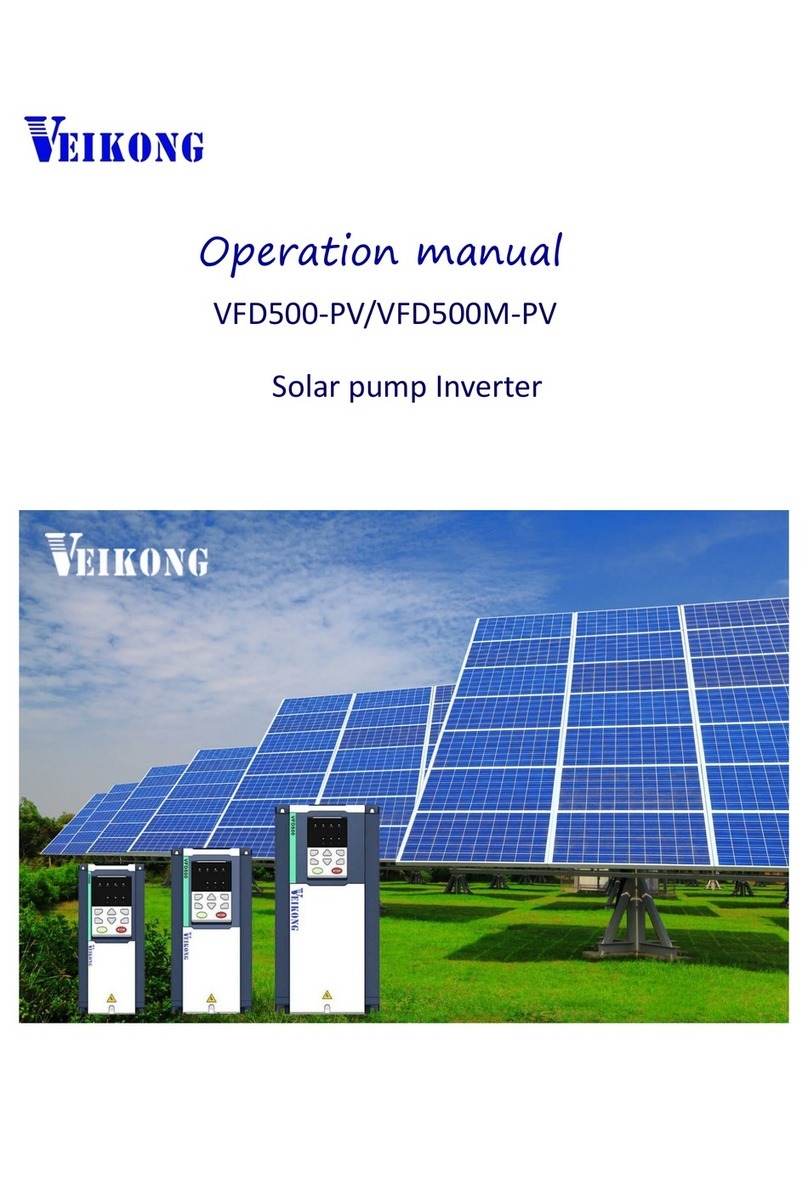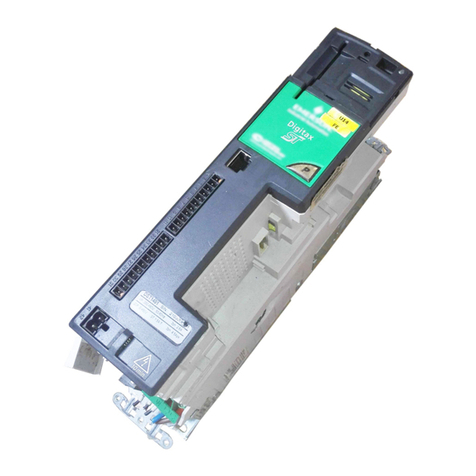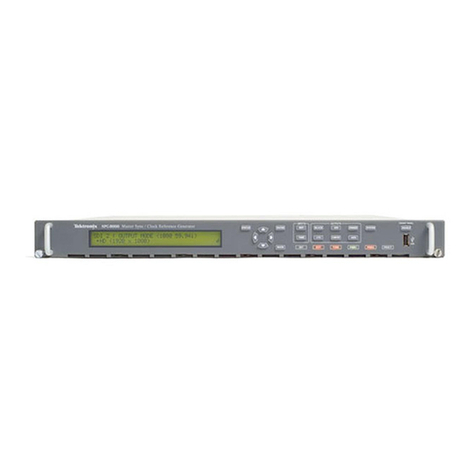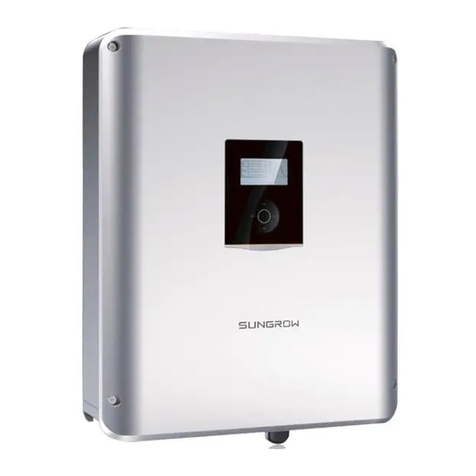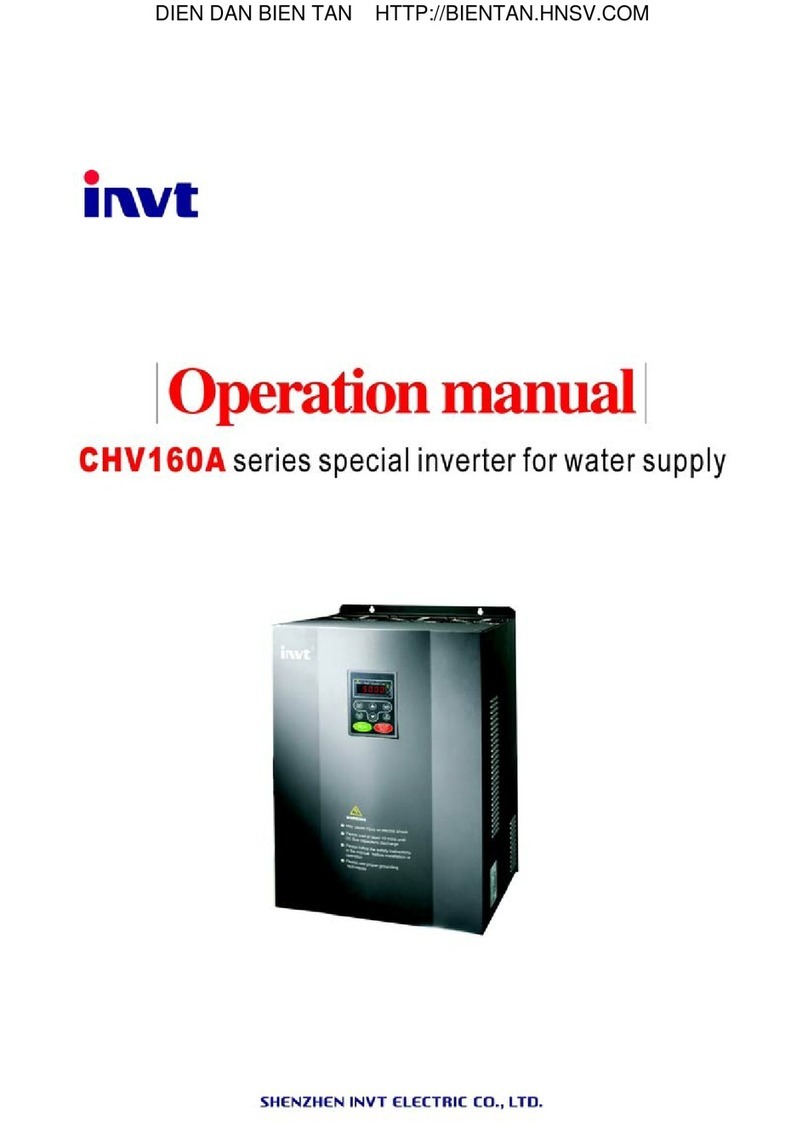Bosch c-Si M 48 EU Operating instructions

de
deutsch
Bosch Solar Module c-Si M 48 I Bosch Solar Module c-Si M60 I Bosch Solar Module c-Si M60 S I Bosch Solar Module c-Si P60
Robert Bosch GmbH
en Operating instructions
Installation and Operation Guide
Crystalline Solar Modules
Bosch Solar Module c-Si M 48 EU I Bosch Solar Module c-Si M 60 EU
Bosch Solar Module c-Si M 60 S EU I Bosch Solar Module c-Si P 60 EU
Issue 02/2012

en
Bosch Solar Module c-Si M 48 EU I Bosch Solar Module c-Si M 60 EU I Bosch Solar Module c-Si M 60 S EU I Bosch Solar Module c-Si P 60 EU Bosch Solar Energy AG
Table of Contents
2 | Table of Contents | Introduction
1 Introduction 2
2 Safety guidelines 3
3
Positioning guidelines 4
4
Installation guidelines 5
5
Circuitry guidelines 8
6
Electrical connector 9
7
Grounding 10
8
Maintenance and upkeep 10
9
Disposal 10
10
Storage and transport 11
Please read this installation and operation guide com-
pletely and carefully before you transport, install and
operate the solar modules! It contains (among other
information) important safety information which you must
know. When solar modules are used without observing all
instructions in this guide, all warranty and guarantee
claims towards us shall lapse. We reserve the right to
update the information in this guide without prior notice.
The installation, setup and commissioning of solar mo-
dules requires a high level of expertise and experience,
and therefore must be performed solely by specialists
(e. g. a specialist electrician) who can verify the success-
ful completion of suitable training.
1 Introduction

en
english
Bosch Solar Module c-Si M 48 EU I Bosch Solar Module c-Si M 60 EU I Bosch Solar Module c-Si M 60 S EU I Bosch Solar Module c-Si P 60 EU Bosch Solar Energy AG
Safety guidelines | 3
2 Safety guidelines
The setup and commissioning of the electrical system
may only be performed by a specialist electrician in
observance of the following guidelines, since improper
performance of this work can lead to damage and injury.
When performing work on solar generators – primarily
on roofs – suitable safety precautions (e. g. fall arresting
devices) must be used. The regulations set forth by
Employers‘ Liability Insurance Associations must absolu-
tely be observed. For your own safety and to safeguard
your solar module, please observe the following safety
guidelines:
During the setup and maintenance of solar modules,
the valid regulations and safety guidelines for the
installation of electrical devices and systems, as well
as the regulations set forth by the competent energy
supply company for the parallel grid operation of
solar power systems.
Prior to setup, the solar module must be inspected
for mechanical soundness. Damaged solar modules
(e. g. modules with broken glass, damage to the insu-
lation film at the reverse) may not be set up.
Damage to the insulation film at the reverse has se-
vere potential consequences (delamination, endan-
germent of life and health).
Definitely align the solar module so as to avoid a
shadowing effect (even to a temporary or partial
extent: e. g. due to roof dormers, trees), since this
can lead to damage in the solar modules (e. g. forma-
tion of „hot spots“), failure of the PV generator and
loss of output.
The serial connection of the modules (addition of the
module voltages) may result in voltages above the
safety extralow voltage of 120 V DC!
Application class of the modules in accordance with
IEC 61730: A
Even when the light intensity is low, one must reckon
with the full atrest voltage of the modules – that is to
Important Notice!
say, in the course of setup, one must always exercise
the greatest caution with regard to electrical faults
(e. g. short circuits).
The separation of conductors which carry direct
current can lead to light arcs. Therefore, prior to
performing any work on the solar system – particular-
ly prior to separating the plug connectors in the di-
rect-current circuit – it is essential to disconnect the
frequency inverter from the alternating-current grid.
For roof-mounted systems, the modules must be
attached above a fireresistant surface.
Solar modules may not be installed near easily-flam-
mable substances, gases or vapors.
The guidelines on fires in electrical systems (e. g.
VDI 3819) apply hereto.
The maximum permissible totalsystem voltage for the
frequency inverter may never be exceeded. In additi-
on, due to the negative temperature coefficient of the
solar modules, the atrest voltage of the total system
at the minimum permissible temperature must also
be calculated (see data sheet and module type sign).
The solar module is to be treated as a glass product
and may therefore not be used or walked on under
any circumstances in the transport container or used
as a placement area (e. g. for toolboxes), since this
can lead to visible or even invisible damage (e. g.
microcracks in the cells and with that, a premature
drop in output – among other faults).
The module frames may not be drilled, nailed or
welded to a contact surface.
The solar modules may not be held or transported by
their connector cables or by the connector socket.
Solar modules may never be left standing freely or
unsecured.
The safety guidelines set forth by the manufacturers
of other components of the solar system must be
followed.
The drainage drill holes in hollowchamber frames may
not be covered.
Solar modules made by Bosch Solar Energy are not
regulated construction products in the context of the
DIBt (Deutsches Institut für Bautechnik – German
Institute for Construction Engineering) and may not
be used as overhead glazing.

en
Bosch Solar Module c-Si M 48 EU I Bosch Solar Module c-Si M 60 EU I Bosch Solar Module c-Si M 60 S EU I Bosch Solar Module c-Si P 60 EU Bosch Solar Energy AG
3 Positioning guidelines
In order to achieve the highest-possible annual energy
yield, we recommend positioning the module so as to
fulfill the following criteria:
Definitely align the solar module so as to avoid a
shadowing effect (even to a temporary or partial
extent: e. g. due to roof dormers, trees), since this
can lead to damage in the solar modules (e. g. forma-
tion of „hot spots“), failure of the PV generator and
loss of output.
Align the front of the solar module to the south.
Select the angle of inclination according to the local
and structural factors (30° ± 15°). You will find spe-
cific data on optimum module positions in the perti-
nent specialized literature. The calculation of the
angle of inclination can be based on the following
formula: angle of inclination = latitude of the positio-
ning locality – 20°.
All modules of a photovoltaic generator are to be
aligned at the same angle (horizontal as well as verti-
cal). In the event of angle deviations, separate fre-
quency converters are to be designated.
4 |Positioning guidelines
In order to ensure sufficient selfcleaning, the angle of
inclination must amount to at least 10°.
For optimized selfcleaning, a 15° minimum angle of
inclination is recommended.
Always ensure that the reverse side of the module is
well ventilated.
To avoid increased strain of the modules due to wind
load, it is necessary to observe minimum distances
from building boundaries according to DIN 1055-4.
A concentration of sunlight on the modules via mir-
rors or lenses is prohibited.
Avoid contact with salty water!
The crystalline solar modules made by Bosch Solar
Energy have been tested in accordance with the
following norms for their response to contact with
salty air:
– IEC 61701: 1995
– DIN EN 61701: 2000-08
– IEC 60068-2-52.
Please observe the test conditions indicated in the
norms when using the modules in salty air.

en
english
Bosch Solar Module c-Si M 48 EU I Bosch Solar Module c-Si M 60 EU I Bosch Solar Module c-Si M 60 S EU I Bosch Solar Module c-Si P 60 EU Bosch Solar Energy AG
4 Installation guidelines
Module manufacturer code Screw diameter
11, 13 M6
14, 17, 23 M8
Table 1: Permissible fastening screws for direct installation
Definitely align the solar module so as to avoid a
shadowing effect (even to a temporary or partial
extent: e. g. due to roof dormers, trees), since this
can lead to damage in the solar modules (e. g. forma-
tion of „hot spots“), failure of the PV generator and
loss of output.
The additional loads which arise by way of the weight
and the structural attachment of the PV system are to
be included in the structural analysis of the overall
construction.
Verifications of stability, deflection and load parame-
ters are to be initiated by the constructor or the
operator of the system.
Install the modules on a sufficiently-dimensioned,
load-bearing and permanently corrosion-resistant
substructure.
Observe the specifications for mounting areas accor-
ding to Illustrations 1 and 2.
Attachment with clamps on the narrow sides of the
solar module may not be performed.
The attachment of the solar module can be perfor-
med with clamps (or as an alternative, directly on the
installation holes). When clamping systems are used,
the clamp surface per attachment point on the mo-
dule must amount to at least 400 mm².
Position of the installation drill holes in accordance
with Illustrations 3 – 6
Per module, four non-corrosive screws and nuts (and
grommets with min. 12 and max. 14 mm exterior
diameters) are to be used in accordance with Table 1.
Installation guidelines | 5
Important Notice!
The modules must be attached flush to the substruc-
ture (without tension and deformation) at no less
than four points.
The substructure and the solar module must have the
same heat-expansion coefficient (aluminum).
Contact corrosion between the solar module and the
substructure is to be avoided when different materi-
als are used.
Attach the solar modules so that they with-stand all
foreseeable loads and weather-induced influences.
Only use non-corrosive screws for the installation.
The solar module must be installed without mechani-
cal tension and (to compensate material expansion
due to temperature fluctuations) with a minimum gap
of 5 mm to the next module.
Particularly in exposed locations, sufficient lightning
protection is recommended.
Integration into existing lightning protection systems
must occur in observance of the valid regulations.
Only install solar modules edgewise (or crosswise),
with the connector socket facing upward.
In the course of elevation, it must be ensured that no
rainwater or condensation water can run in the direc-
tion of the cable screw connections on the connector
sockets.
The solar module may not stand in tail water or con-
densation water.

en
Bosch Solar Module c-Si M 48 EU I Bosch Solar Module c-Si M 60 EU I Bosch Solar Module c-Si M 60 S EU I Bosch Solar Module c-Si P 60 EU Bosch Solar Energy AG
l/4
mounting
holes
l/2l/4
l
l/7l/7
l/4
mounting
holes
l/2l/4
l
l/7l/7
Figure 1: Mounting area, vertical
Figure 2: Mounting area, horizontal
6 |Installation guidelines

en
english
Bosch Solar Module c-Si M 48 EU I Bosch Solar Module c-Si M 60 EU I Bosch Solar Module c-Si M 60 S EU I Bosch Solar Module c-Si P 60 EU Bosch Solar Energy AG
Figure 3: reverse side c-Si M 60 and M 60 S, Manufacturers
14, 17 and 23
Figure 4: reverse side c-Si M 60, Manufacturer 13
4 x Mounting holes for grounding cable
4 x Module mounting holes
430800 ± 0,5
20
1660 ± 2
800
1200
990 ± 2
100
15
Ø4,36
Ø9
Ø9
4 x Mounting holes for grounding cable
340
20
20
100
Ø9
Ø4,2
Ø9
1000 ± 0,5
990 ± 2
1680 ± 2
1000
4 x Module mounting holes
2 x Mounting holes
for grounding cable
4 x Module mounting holes
988 ± 2
812 ± 0,5
1000
Ø4,5
Ø7
Ø7
22,5
22,5
423,75
1659,5 ± 2
2 x Mounting holes
for grounding cable
1343 ± 2
988 ± 2
817 ± 0,5 263
1000
Ø7
Ø7
Ø4,5
22,5
22,5
4 x Module mounting holes
Figure 5: reverse side c-Si M 60 and P 60, Manufacturer 11 Figure 6: reverse side c-Si M 48 and P 48, Manufacturer 11
Installation guidelines | 7

en
Bosch Solar Module c-Si M 48 EU I Bosch Solar Module c-Si M 60 EU I Bosch Solar Module c-Si M 60 S EU I Bosch Solar Module c-Si P 60 EU Bosch Solar Energy AG
5 Circuitry guidelines
Only identical solar modules of the same type and engi-
ne-power class may be switched. In this process, ensure
that in the course of the serial switching of the modules,
the maximum permissible system voltage is not excee-
ded. In this context, observe the temperature dependen-
cy of the module voltage for the solar modules, particu-
larly since the module voltage rises when low tempera-
tures prevail.
For the parallel switching of the modules, it must be
ensured that always the same number of modules is
serially switched to the stands to be switched parallel to
these, and that suitable measures for surge protection
8 |Circuitry guidelines
are taken (e. g. strand fuse). It must be ensured that the
specified load capacity with regard to the reverse current
IR (17 A at c-Si M 60 and c-Si M 48, 16 A at c-Si P 60 and
c-Si P 48) is not exceeded.
Under standard conditions, a PV module can provide
higher current and/or higher voltage than was specified
under normed test conditions. To determine the voltage-
rating values of structural components, the currentrating
values of cables, the sizes of fuses and the rating of
controls connected to the output of PV modules, the Isc
und Uoc values indicated on the module should therefore
be multiplied by a safety factor of 1.25.
No more than two module strands can be switched
parallel without a sufficiently-dimensioned strand fuse.

en
english
Bosch Solar Module c-Si M 48 EU I Bosch Solar Module c-Si M 60 EU I Bosch Solar Module c-Si M 60 S EU I Bosch Solar Module c-Si P 60 EU Bosch Solar Energy AG
6 Electrical connector
The solar modules are designated for use in gridcoupled
solar generators. When used for another purpose, the
respective deviating technical particularities must be
observed. The solar modules may only be installed by
qualified specialized companies. In this context, the
norms and regulations relevant to PV systems, such as
VDE provisions, DIN norms, VDEW guidelines, the TAB of
the competent system operators along with the rules set
forth by the Employers‘ Liability Insurance Associations
on accident prevention.
Particular reference is made once again to the following
items:
Prior to the installation, the connector socket, cables
and plug connectors are to be checked for damage
and dirt.
Do not install any damaged PV modules or any PV
modules with dirty plug connectors.
The solar modules (particularly the plug connectors
and tools) must be dry during the installation.
For the switching of module strings, only suitable
(UV- and ozone-resistant) cables are to be used for
outside installation.
The cables must have a minimum cross-section of
4 mm², and the insulation must be approved for the
maximum system atrest voltage.
The cables are to be protected from damage by using
e. g. a suitable fastener via cable clamps.
The connector socket with cables connected at the
plant may not be opened.
The connector socket, the cable and the connector
plug may not be cleaned or otherwise moistened
with substances containing oil, grease or alcohol.
The solar plugs installed by the plant may not be
removed.
In the course of the installation, one must ensure the
tensile relief of the module connector cables.
Manufac-
turer
Module
Version
Positive Pole Negative Pole
11 EU xx011 Tyco, Neutral
6-1394461-2
Tyco, Minus
1394462-4
13 EU xx113 MC4, Plus
PV-KST4
MC4, Minus
PV-KBT4
14 EU xx014 MC3, Plus
PV-KST3
MC3, Minus
PV-KBT3
17 EU xx017 MC3, Plus
PV-KST3
MC3, Minus
PV-KBT3
17 EU xx117 MC4, Plus
PV-KST4
MC4, Minus
PV-KBT4
23 EU xx123 MC4, Plus
PV-KST4
MC4, Minus
PV-KBT4
Table 2: Coding for connector plug1
1 EU XXXXX: Internal technology code
Important Notice!
Electrical connector | 9
The connector cables are equipped with a high-quali-
ty plug-connector system for photovoltaics. The plugs
are marked with the respective polarity, or the cables
are designed in red for “plus” and blue for “minus”;
see Table 2 and the data sheet.
When connecting the plug connectors and the mo-
dules (and when connecting the solar modules to the
frequency inverter), always ensure that the polarity is
correct. Reverse polarity leads to the destruction of
important technical structural components such as
frequency inverters, safety diodes or similar compon-
ents.
The connector cables are to be laid so as to ensure
that the minimum bend radius of 60 mm is not un-
dershot.
In order to avoid the hazard of electric shocks, all
frames of the solar modules as well as the support
structure for potential equalization must be con-
nected to the grounding so as to ensure good con-
ductivity. We recommend grounding outside the
building. In this process, observe the statutory regu-
lations for your region, along with the recommenda-
tions issued by the frequency-inverter manufacturers
and the insurance company.
Never plug in or unplug the plug contacts when under
load current!

en
Bosch Solar Module c-Si M 48 EU I Bosch Solar Module c-Si M 60 EU I Bosch Solar Module c-Si M 60 S EU I Bosch Solar Module c-Si P 60 EU Bosch Solar Energy AG
Particularly in exposed locations, sufficient lightning
protection is recommended. Integration into existing
lightning-protection systems must occur in observance
of current country-specific norms and regulations. The
respective drill holes for grounding are marked on the
reverse side of the module frame.
Please perform the following grounding measures:
Attachment of a fitting ring-cable socket (cable cross-
section: min. 2.1 mm²).
Use of a fitting fastening screw (minimum diameter:
4 mm), a self-cutting serrated washer, a spring
washer and the fitting nut.
Use of a fitting self-cutting screw. Two complete
thread turns of a screw must interlock with the
metal.
Damaging contact corrosion can be avoided by using
corrosion-resistant materials.
Position of the grounding drill holes in accordance
with Illustrations 3 – 6.
7 Grounding
Important Notice!
Defective or old solar modules must be appropriately
disposed of. These may not be disposed of in house-
hold waste.
Minimal maintenance and upkeep effort is required in
order to maintain the optimum output of the solar mod-
ule. In the interest of optimum system output, we rec-
ommend to inspect and/or work through the following
items on a semiannual cycle:
8 Maintenance and upkeep
9 Disposal
Important Notice!
In the event of heavy or localized contamination (e. g.
with bird droppings), it is recommended to clean the
glass surface of the module with limefree water
which matches the module temperature and a soft
brush. No aggressive cleaning agents, acids or
leaches may be used.
The electrical and mechanical connectors must be
checked for cleanliness, durability and sound conditi-
on. Any irregularities must be remedied immediately.
Regular verification of the yields by the operator is
recommended.
10 | Grounding |Maintenance and upkeep |Disposal

en
english
Bosch Solar Module c-Si M 48 EU I Bosch Solar Module c-Si M 60 EU I Bosch Solar Module c-Si M 60 S EU I Bosch Solar Module c-Si P 60 EU Bosch Solar Energy AG
The handling of modules requires great diligence. There-
fore, caution is required when unpacking, transporting
and temporarily storing these modules:
Do not set the modules down forcefully on hard
ground or on the edges.
Avoid bending during transport or when unpacking.
Do not drop the modules.
Do not place any objects on the modules.
Do not handle the modules using sharp objects.
In the course of storage and transport, it must be
ensured that each solar module is sufficiently rein-
forced.
10 Storage and transport
Important Notice!
Storage and transport | 11
The stacking of packaging units can cause damage to
the solar modules and must definitely be avoided!
The solar modules are to be secured against overtur-
ning!
Layer pads must be used between the individual
solar modules.
We recommend storing all solar modules in dry interior
rooms and in the original packaging until their final
installation.
When setting the modules down or transporting them to
the immediate installation site (e. g. a roof), any damage
to the module is to be avoided.
The modules may not be grasped and transported on a
single frame component!
Installation guide last updated: 02/2012

de
Bosch Solar Module c-Si M 48 I Bosch Solar Module c-Si M60 I Bosch Solar Module c-Si M60 S I Bosch Solar Module c-Si P60
Robert Bosch GmbH
Bosch Solar Energy AG
Robert-Bosch-Straße 1
99310 Arnstadt
Germany
Tel. +49 (0)361 2195-0
Fax +49 (0)361 2195-1133
www.bosch-solarenergy.de
This manual suits for next models
28
Table of contents
Other Bosch Inverter manuals

Bosch
Bosch GEN 230V-1500 User manual
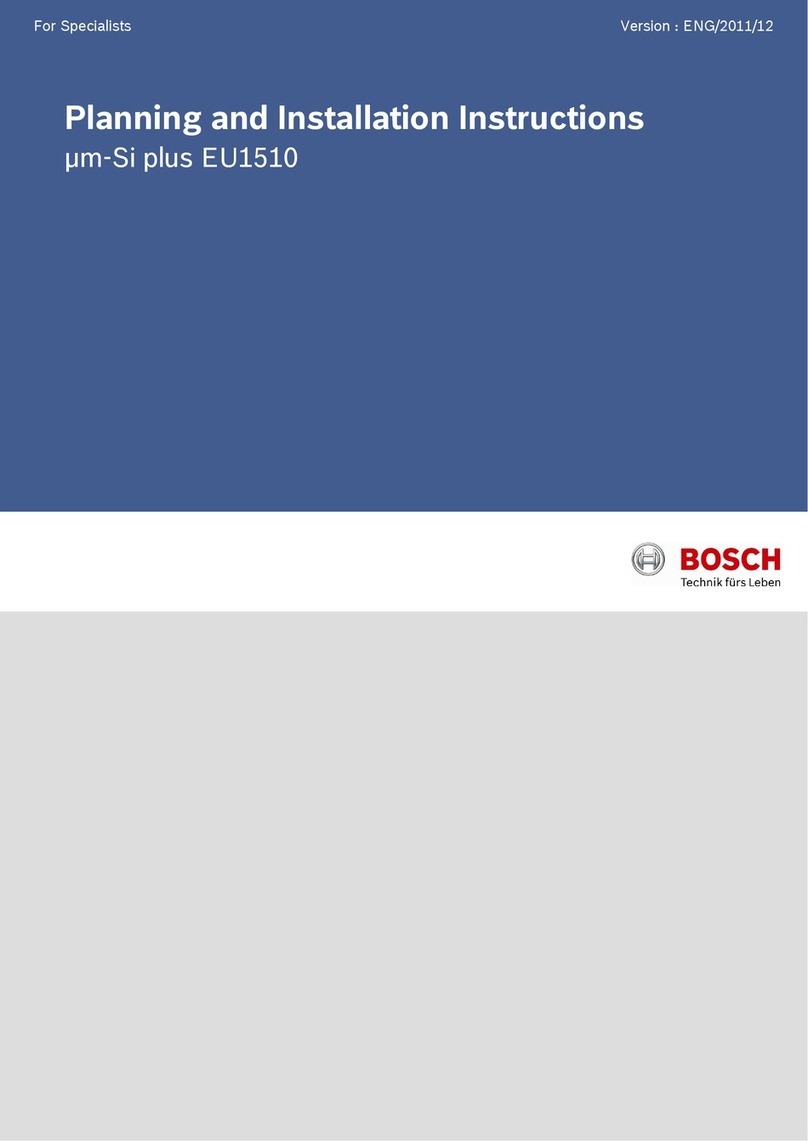
Bosch
Bosch mm-Si plus EU1510 Series Technical manual
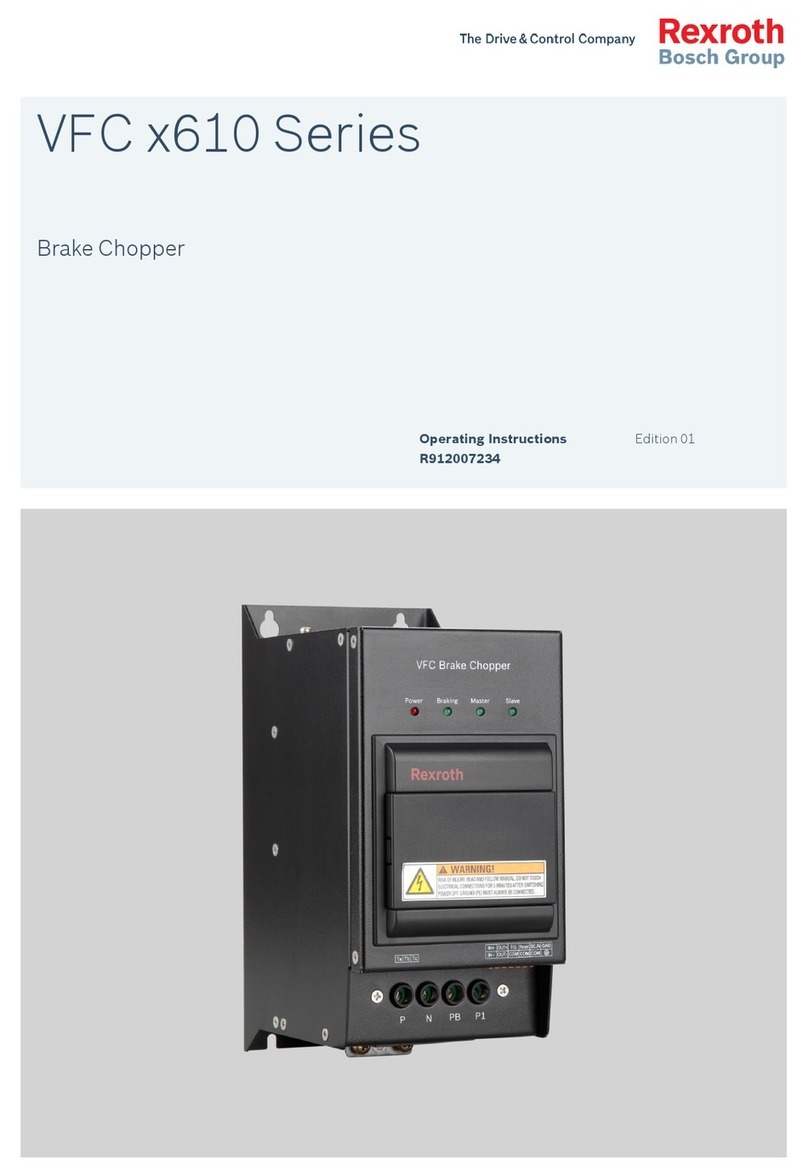
Bosch
Bosch REXROTH VFC 610 Series User manual
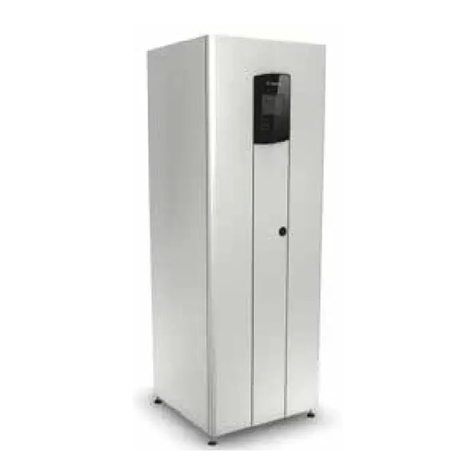
Bosch
Bosch BPT-S 5 Hybrid User manual

Bosch
Bosch FCB 120-1V-NB Instruction sheet
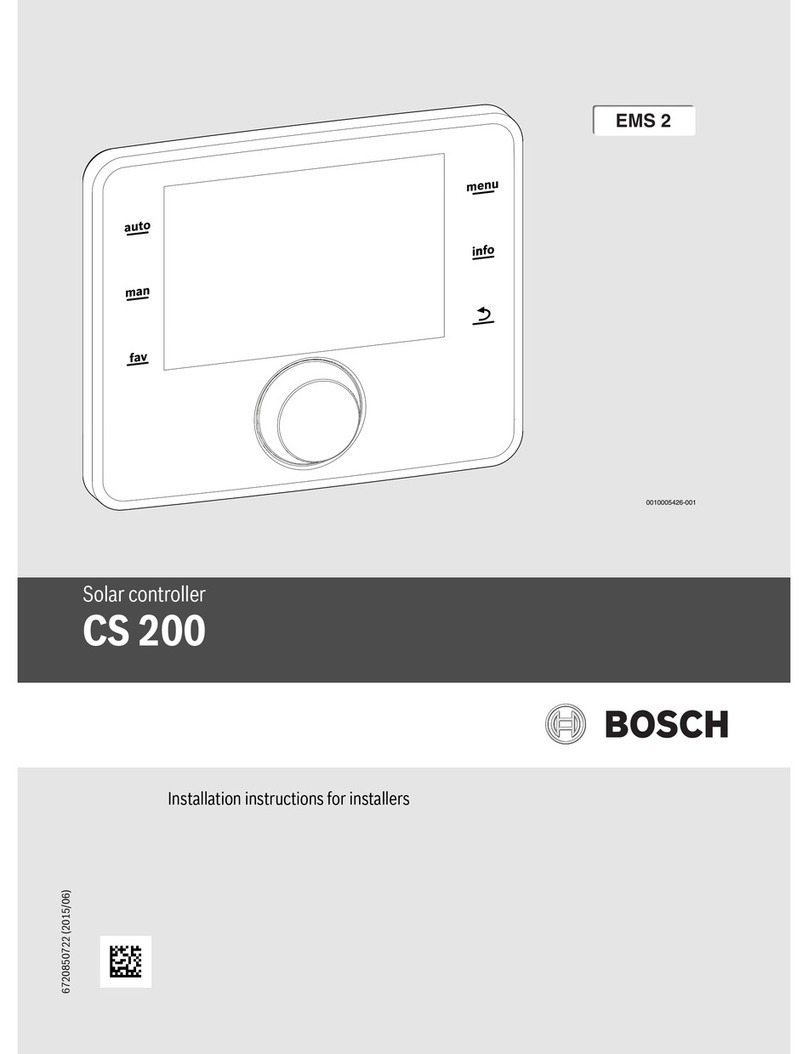
Bosch
Bosch CS 200 User manual

Bosch
Bosch 19 SEER Series User manual
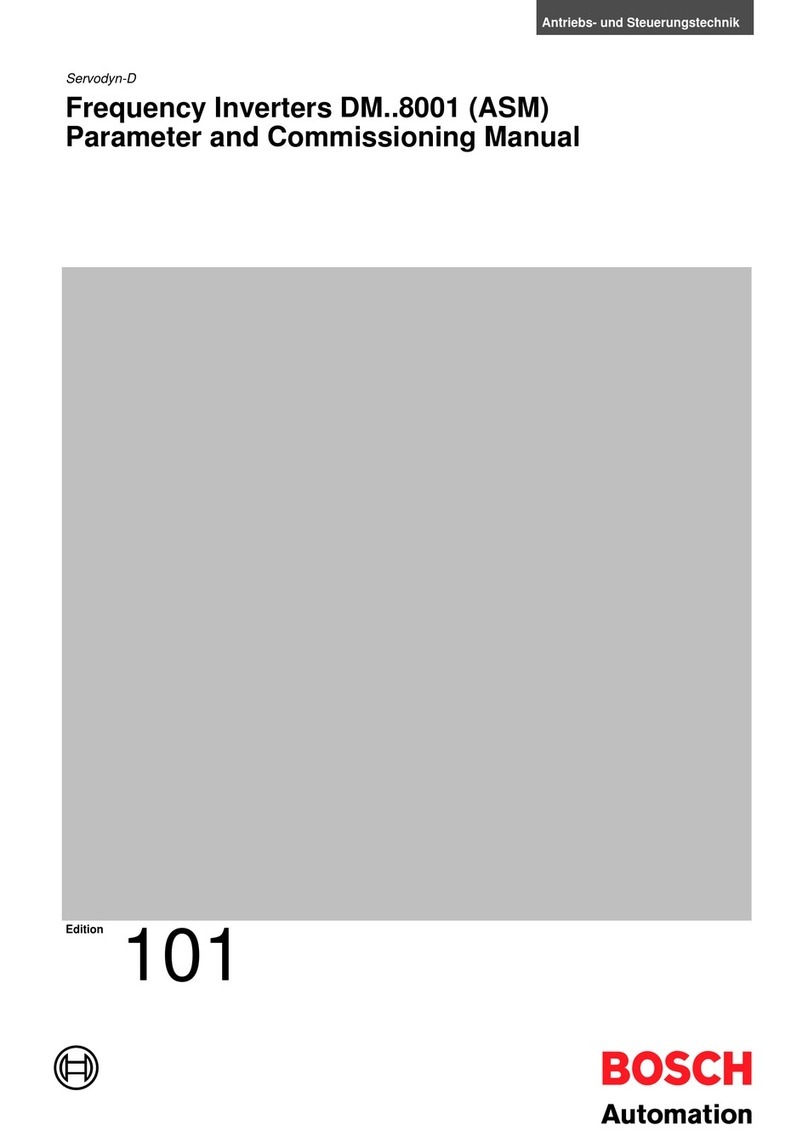
Bosch
Bosch DM**8001 Series User manual

Bosch
Bosch BPT-S Operating and maintenance instructions

Bosch
Bosch Rexroth IndraDrive ML Series Technical manual
